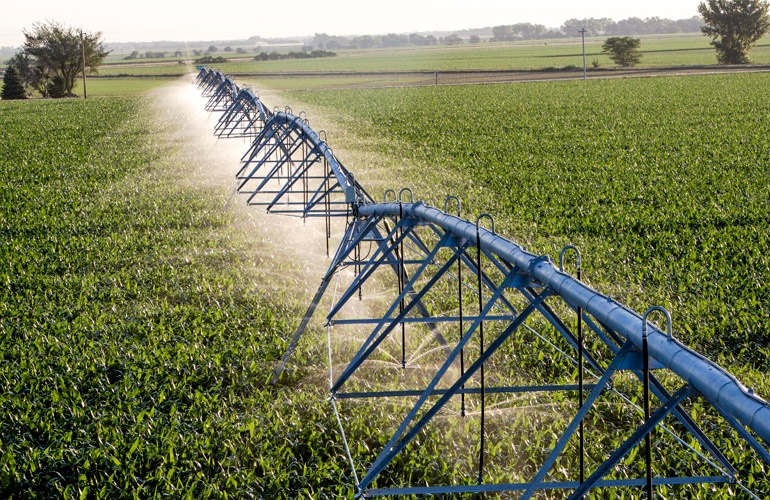A pivot irrigation system is a type of automated irrigation system that uses a central pivot to deliver water to crops in a circular pattern. Pivot systems are often used in large-scale agriculture, as they can cover large areas quickly and efficiently.
If you want to buy the pivot irrigation system you may hop over to https://mvi.farm/valley-center-pivots.

Image Source Google
Pivot systems typically consist of a long pipe, called the main line, that is mounted on a set of wheels or tracks. The main line is connected to an irrigation source, such as a well or reservoir, and runs through the center of the field. A series of sprinkler heads, called laterals, are attached to the main line and spaced evenly throughout the field.
As the main line turns, the laterals spray water in a circular pattern around the pivot point. The size and shape of the field can be customized to fit the needs of the crops being grown. Pivot systems can be operated manually or automatically, using sensors to monitor soil moisture levels and adjust watering accordingly.
Pivot irrigation systems offer many benefits over other types of irrigation, including increased efficiency, flexibility, and uniformity. Pivot systems can reduce water usage by up to 30% compared to traditional methods such as flood irrigation.
They can also be used on fields with uneven terrain or slopes, allowing farmers to make better use of their land. And because pivot systems deliver water directly to the roots of plants, they promote healthier growth and higher yields.
Types of Pivot Irrigations
There are two main types of pivot irrigation systems: center pivot and lateral move. Center pivot systems are the most common type of pivot system. They are generally used for circular fields, and they operate by pivoting around a central point in the field.
Lateral move systems are less common, and they are used for fields that are not perfectly round. These systems move side-to-side instead of around a central point, and they can cover larger areas than center-pivot systems.